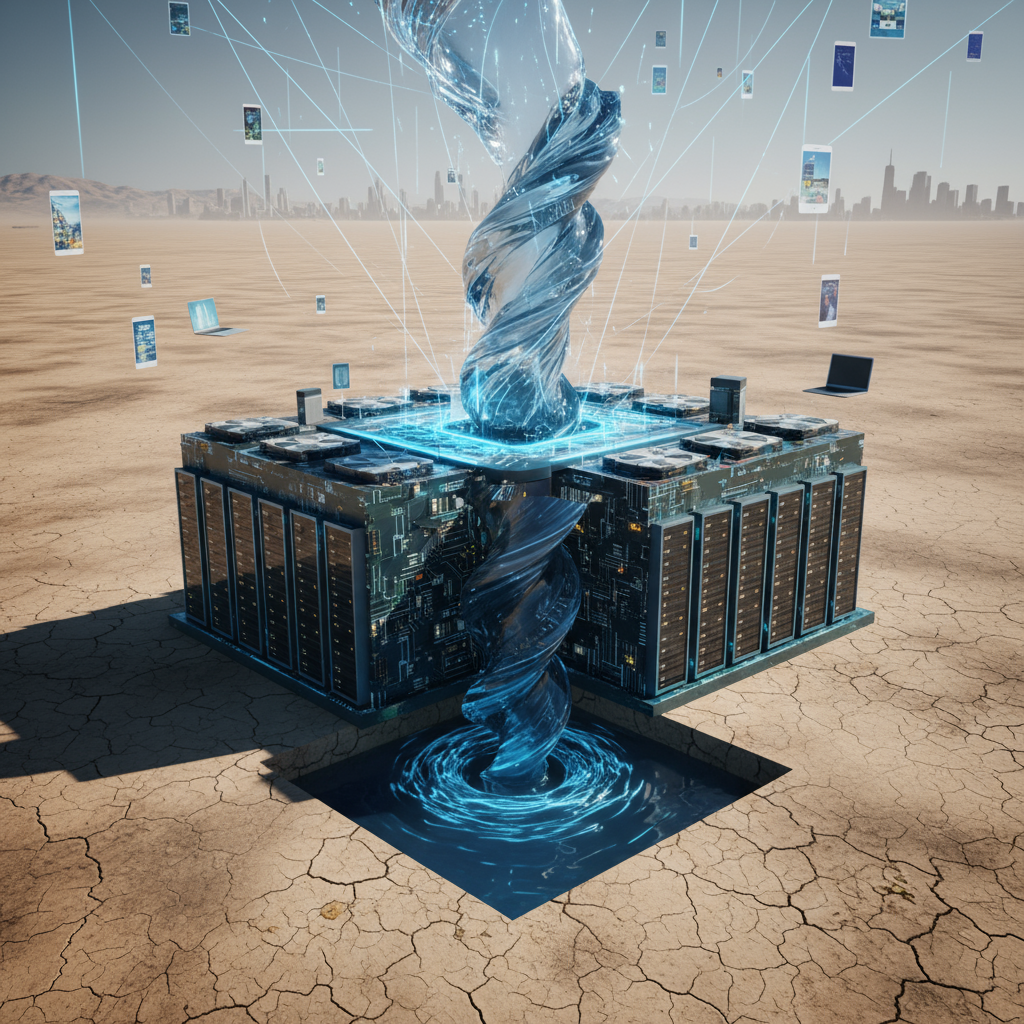We marvel at the advancements of Artificial Intelligence, from generating stunning images to writing complex code. But beneath the surface of this technological revolution lies a stark reality: AI is not just a digital construct. Its immense computational power comes at a surprisingly high, and increasingly visible, cost: water. And alarmingly, this thirst for water is often concentrated in regions already grappling with scarcity.
The intricate dance between data centers, AI algorithms, and our planet’s most precious resource is often overlooked. But recent reports are shedding light on a critical issue: the burgeoning demand for water to cool the servers that power our AI-driven world is disproportionately impacting communities that can least afford to lose it. The irony is poignant: the very technology designed to solve some of humanity’s biggest problems may be exacerbating one of its most fundamental challenges.
The Unseen Thirst of Our Digital World

When we think of AI, we often conjure images of lines of code or complex algorithms. What we rarely visualize are the physical facilities, the massive data centers, required to run these sophisticated models. These centers are essentially colossal warehouses filled with thousands, sometimes hundreds of thousands, of powerful servers. These servers generate an enormous amount of heat, posing a significant challenge to their efficient operation.
To prevent overheating and ensure continuous functionality, data centers rely heavily on cooling systems. While some employ air-cooling, many utilize advanced liquid-cooling techniques, which are far more effective at dissipating heat. These systems often involve large chillers that use evaporated water to cool down the circulating air or liquid within the facility. This process, while essential for keeping our digital infrastructure running, consumes vast quantities of water.
It’s not just the direct cooling that consumes water. The electricity powering these data centers also has a water footprint. Power generation, especially from fossil fuels or nuclear sources, requires substantial amounts of water for cooling. So, even if a data center uses air-cooling, its energy consumption indirectly contributes to water scarcity.
Where the Rivers Run Dry for AI
The problem is compounded by the geographical placement of many of these data centers. Driven by factors like cheap land, access to reliable power grids, and fiber optic connectivity, these facilities are often established in regions that coincidentally face significant water stress. These locations, which might seem ideal from a logistical perspective, are often areas where local communities already struggle with access to clean, potable water for agriculture, sanitation, and daily life.
For example, areas in the American Southwest, known for their arid climate and existing water challenges, have become attractive sites for data center development. Similarly, other regions globally, grappling with drought and dwindling water tables, are seeing an influx of these water-intensive operations. This creates a direct competition for resources between essential community needs and the demands of a rapidly expanding tech industry.
Local municipalities, often eager for the economic benefits that come with these large tech investments – jobs, tax revenue – may inadvertently overlook the long-term environmental consequences. The promise of technological advancement often overshadows the more immediate and tangible impact on local water reserves, leading to difficult choices for communities already on the brink.
The Hidden Cost of Every AI Interaction
Consider the seemingly innocuous act of asking an AI chatbot a question or generating an image. Each interaction, no matter how brief, triggers a cascade of computational processes within a data center. These processes consume energy, and that energy, in turn, contributes to water consumption. It’s a chain reaction that connects our digital interactions to very real physical resources.
While the water consumed by a single AI query might seem negligible, the sheer scale of AI usage is what makes it a critical issue. With billions of daily interactions across various AI platforms globally, the cumulative water footprint rapidly becomes staggering. Each scroll, each search, each generated response, adds to this invisible drain on our planet’s resources.
This raises fundamental questions about the sustainability of our current AI development trajectory. Can we continue to push the boundaries of AI without critically evaluating its environmental cost? Are we consciously, or unconsciously, sacrificing essential planetary resources for the sake of technological progress?
Finding a Sustainable Path Forward
Addressing this challenge requires a multi-pronged approach involving governments, corporations, and individuals. Transparency is a crucial first step; data center operators need to publicly disclose their water usage, allowing for proper oversight and accountability. This information can then inform better policy decisions regarding site selection and resource allocation.
Technological innovation also plays a vital role. Continued investment in more efficient cooling technologies, including advancements in air-cooling or closed-loop liquid systems that reuse water, can significantly reduce consumption. Research into sustainable data center design, including integration with renewable energy sources that have lower water footprints, is also essential. Locating data centers in regions with abundant access to non-potable water sources, such as treated wastewater, could also offer a more sustainable alternative.
Finally, we, as users, have a role to play. While individual actions might seem small, a collective awareness of AI’s environmental impact can pressure companies to adopt more sustainable practices. Supporting companies that prioritize environmental stewardship and being mindful of our digital consumption can contribute to a more sustainable future for AI.
A Call to Action for a Water-Wise AI Future
The revelation that AI is draining water from vulnerable areas is a wake-up call. It forces us to confront the tangible environmental costs of our increasingly digital world. As AI continues to evolve and integrate into every aspect of our lives, we must ensure that its development is guided by principles of sustainability and equity.
The promise of AI to solve complex global challenges is immense. But this promise will remain unfulfilled if its pursuit exacerbates existing crises like water scarcity. It’s time for a collective global effort to build an AI future that is not only intelligent but also environmentally responsible, safeguarding our planet’s most vital resource for generations to come.

